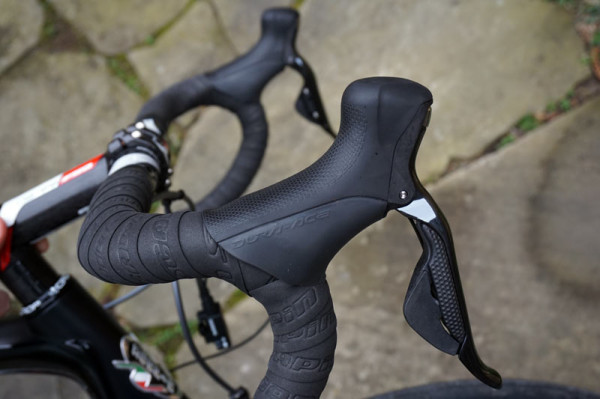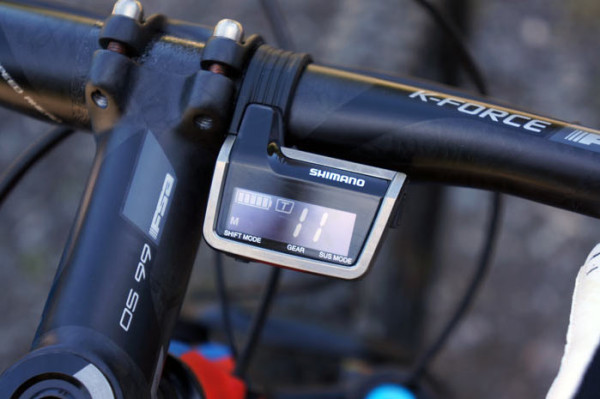For as long as there’s been Di2, Fairwheel Bikes has been hacking it, and some of the more interesting projects involved creating a synchronized shifting system using road parts on an insanely lightweight 29er mountain bike. That system ended up foreshadowing the current XTR Di2’s synchronized shifting and some of the anticipated features of SRAM’s eventual entry into the electronic road shifting market.
Since that original hack, they’ve done it again and again, each time on cleaner and more unique builds for road and mountain bikes.
But, once proper sequential, syncho shifting appeared on the new XTR Di2, it begged the question: Can this be made to work on road parts, too? Fairwheel Bikes asked, and graciously invited us to share some of the answers with you here…
Technically, Shimano’s shown several examples of making it work. XTR Di2 is one, and the new STePS system is another take automated shifting that could be used for some very interesting functionality on a proper performance group.
And, according to Fairwheel Bikes’ more recent experimentation, the XTR gear indicator screen/junction box works inline with Dura-Ace, too. And it reportedly shows your gear selection, which is a nice bonus if you don’t have the D-Fly transmitter to send that info to a newer cycling computer. They even found that you could connect XTR Di2 derailleurs to Dura-Ace levers and have it perform normal shifting function, whether as a 2×11 or 1×11 system.
Where it got complicated was when they added a road Di2 front derailleur. That caused the system to read an error and shut everything down. But why?
The short of it is this: The jump between road chainrings is much greater than mountain chainrings on a double crankset. And to perform a synchronized shift of both simultaneously that moved along a linear progression of gear-teeth, the road system would need to move 3-4 cogs, where the MTB system only moves 1-2. So, it became a clunky transition, not buttery smooth and all but indecipherable shifts of XTR Di2. Another reason, according to Shimano’s tech folks, is that XTR knows when a double tap on the shifter ends up sending the system to a gear that would shift both front and rear, so it cancels out the second rear shift and initiates the pre-programmed, proper synchro shift. The road parts don’t know to do that.
Wanna really geek out on it all? Check out their detailed description of the experiment here.
Like them, we suspect it’ll eventually get to a point where road synchro shifting happens, but the hardware and software may need to change a bit before it lives up to Shimano’s standards.

